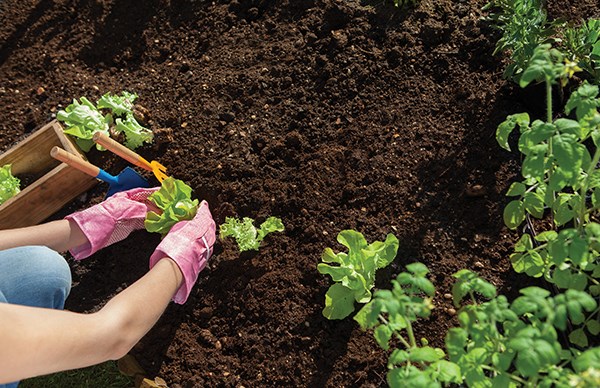Growing vegetables is gaining huge popularity with the masses these days. People from all walks of life are getting their “green thumb” on, and for good reason.
It’s fun, relatively simple, you can grow specific specialty seed varieties and really feel great about where your food comes from. Nothing beats a freshly pulled carrot from your own garden or shelling an English pea in the spring.
When it comes to planning a vegetable garden, the best place to start is preparing your soil. Good organic soil needs to be rich in microbial life and full of healthy organisms. Soil is a living structure which needs to be replenished, amended and well cared for.
Garden soil is made up of natural occurring minerals with the various layers of organic material and mineral amendments you continually add. Something like well rotted leaves are great organic matter, and as it further rots and breaks down, it feeds the layers of soil. This includes goodies like mould, fungi, arthropoda and worms. It continues to break down and feed right to the microbial layers of bacteria and protozoa.
It is good to add diverse sources of organic matter to your soil. The richer the ecosystem, the better your soil will be. Great soil isn’t built instantly; you have to wait for the natural rotting system to take effect and regularly amend. Here are some ways to feed your soil with nutrients from natural and local sources:
• Well rotted manure adds nitrogen and can be a wonderful addition to soil. Make sure it is not too fresh and if it isn’t aged, you will have to wait a couple months to plant. You can buy bags of composted (rotted) manure at nurseries for use this spring.
• Leaf mould is an excellent, free soil amendment. It is easy to make, simple to use and has a huge impact on soil health. When leaves sit and decompose over time and you start to smell an earthy, pleasant scent and the leaves turn to a crumbly texture, you have created leaf mould. It’s simple, and you wouldn’t believe how much it impacts the health of your soil.
Leaf mould improves soil structure and creates a fantastic habitat for soil life, such as worms and microorganisms. Leaf mould has multiple uses in the garden. You can dig it into garden beds to improve soil structure and water retention or use it as a mulch in the perennial or vegetable beds. It helps to keep moisture in and reduce weeds.
• Another great way to amend your soil now is to work a locally made product called sea soil into this year’s garden. Made on Vancouver Island, it is produced over a two-year process by blending fish and forest fines into an organic soil amendment that helps feed the soil.
One bag of sea soil is worked into the soil at a two-inch depth and covers a nine-square-foot area.
Sea soil contains all the macronutrients, producing an NPK (nitrogen, phosphorous, potassium) ratio of 1.7 - 1.5 - 0.6. For comparison, aged manure is usually 1-1-1.
These are general ways to improve soil, which is really at the root of all growing. If you need more specifics, try a soil test from a garden centre to see what you may be missing in your soil composition. The richer the ecosystem you can create, the better your soil and the quality of the plants you grow.




